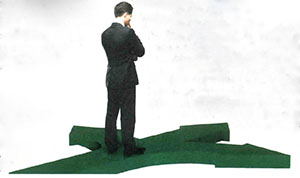Retirement Savings: Leave, Take, or Roll

If you're about to switch employers or retire, you may wonder what to do with the money you have in your employer's retirement plan. Generally, you have four choices, each with very different consequences.
Leave
You may leave the money where it is, provided your former employer's plan permits it. But before you do, there are a few things you should consider. First, do you wish to consolidate your plan savings with other savings you may have elsewhere? Second, would you like to have more investment choices than your employer's plan offers? And third, are the plan's fees and expenses reasonable?
Take
Generally, a cash distribution is the least desirable alternative from a tax viewpoint. The tax law discourages you from taking early distributions by imposing a 10% penalty on distributions that don't fall within certain limited exceptions. Additionally, you will generally have to pay income taxes on the full amount of any plan distribution. With federal income-tax rates as high as 39.6%, a large cash distribution could have severe consequences.
Roll
To avoid an immediate tax bill, consider rolling your money into another tax-favored account. You have two rollover options: Direct rollover. With a direct rollover, you instruct your former employer to transfer your money to an individual retirement account (IRA) or to your new employer's retirement plan, if it accepts rollovers. Such transfers are nontaxable and allow you to continue deferring the income taxes on your retirement savings.
Indirect rollover.
You may also choose an "indirect rollover" by taking the distribution and then redepositing it into an IRA or your new employer's plan within 60 days. However, this option presents a number of complications. First, your former employer will be required to withhold 20% of the distribution and then forward it to the IRS to be applied to your federal income-tax liability for the year. As a result, you will have to make up for that 20% when you complete the rollover within 60 days. Any shortfall will be deemed a taxable distribution and — if you are under age 591/2 — will generally cause you to incur an additional 10% penalty.
One More Option 
If you have any after-tax money in your retirement account, you have an additional option. As the result of recently published IRS guidance, you may be able to roll over the after-tax portion in your plan account directly to a Roth IRA. If tax law rules are followed, later distributions from that Roth IRA — including any earnings on account investments — will be tax free. •
Credit for Camp Expenses
Many employed and selfemployed parents are able to take a federal income-tax credit for a portion of their child care expenses. Typically, parents claim the credit for day care and preschool expenses, but did you know that summer day camp expenses can also qualify?
For 2015, the child and dependent care credit is calculated by multiplying the amount of qualifying expenses (up to $3,000 for one individual or up to $6,000 for two or more) by an applicable percentage (between 20% and 35%, based on income). Children must be under age 13 while attending camp, and other restrictions may apply.
What about the costs of overnight camp? Unfortunately, they are excluded from the definition of "employmentrelated expenses" that can qualify for the credit.
2015 May Pg 01


